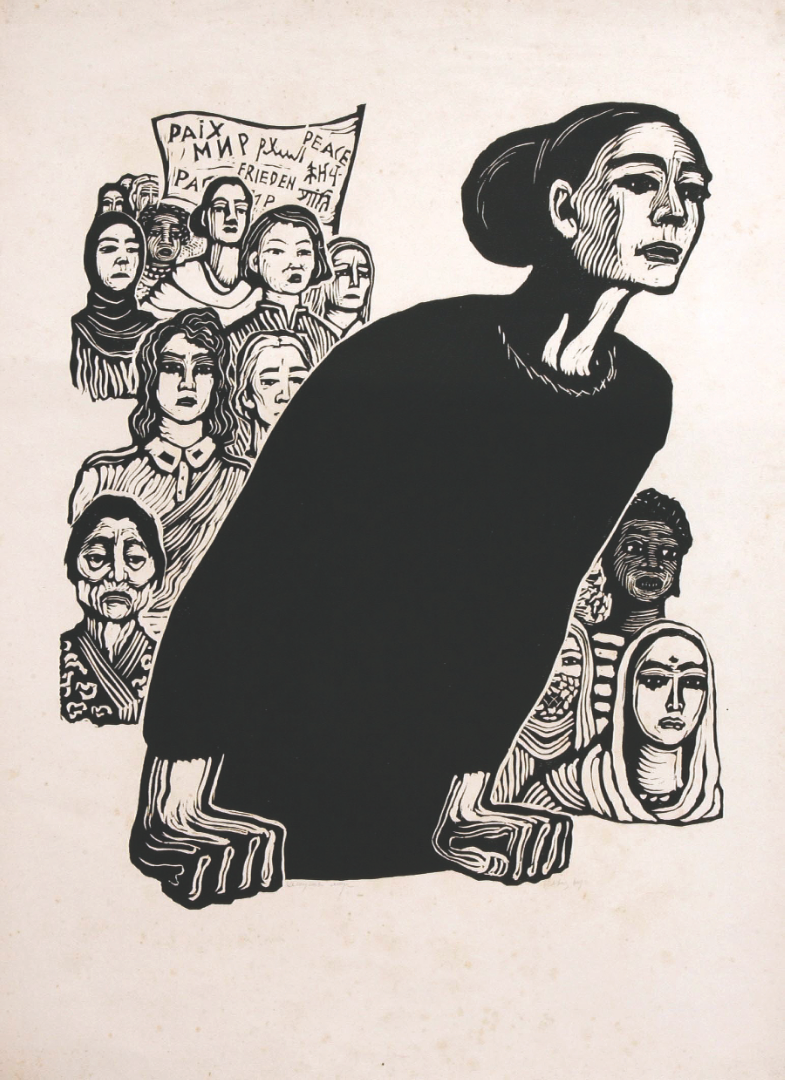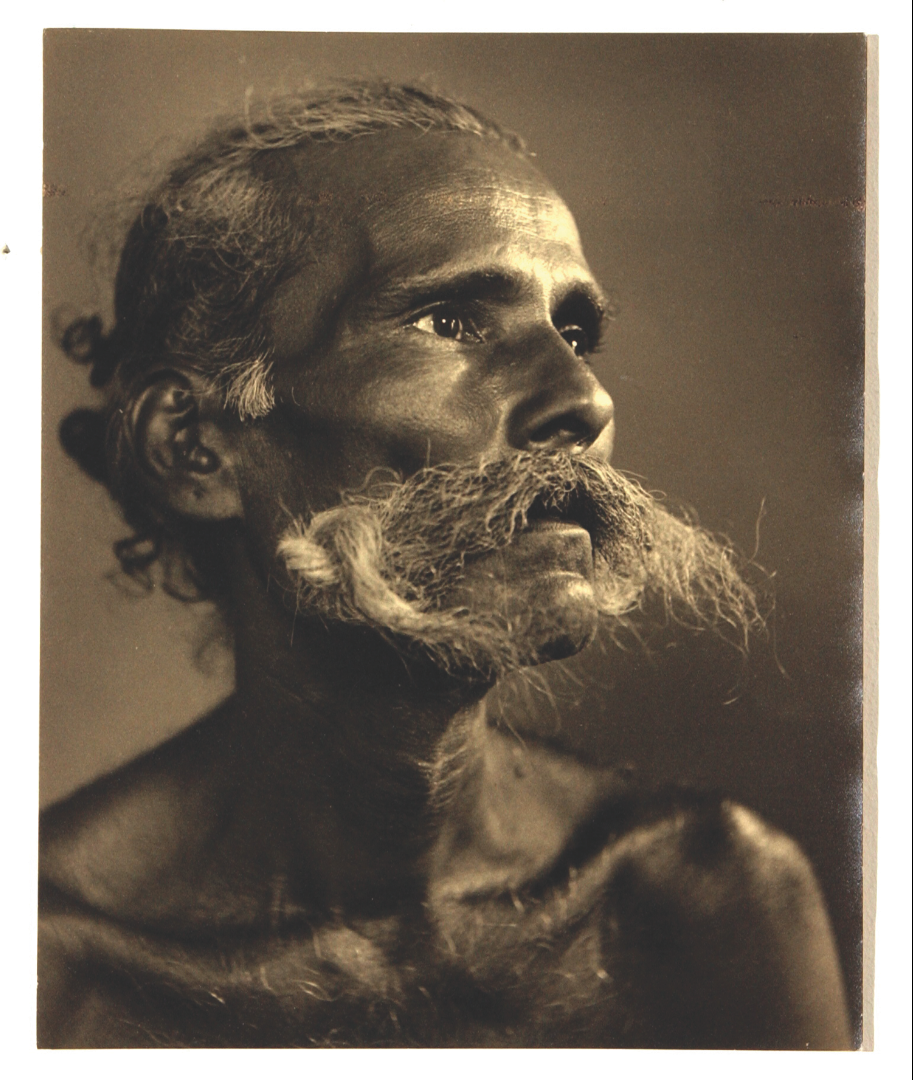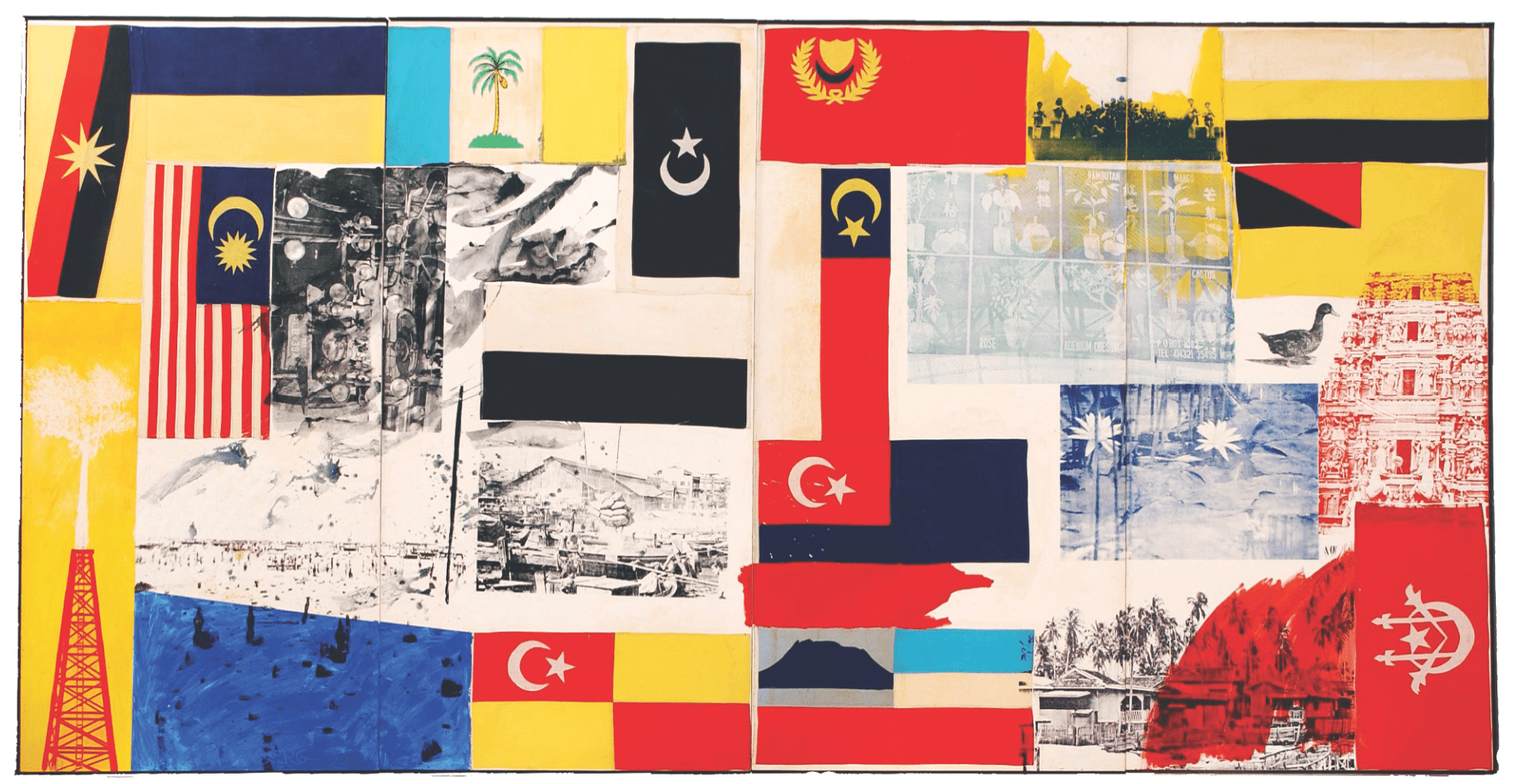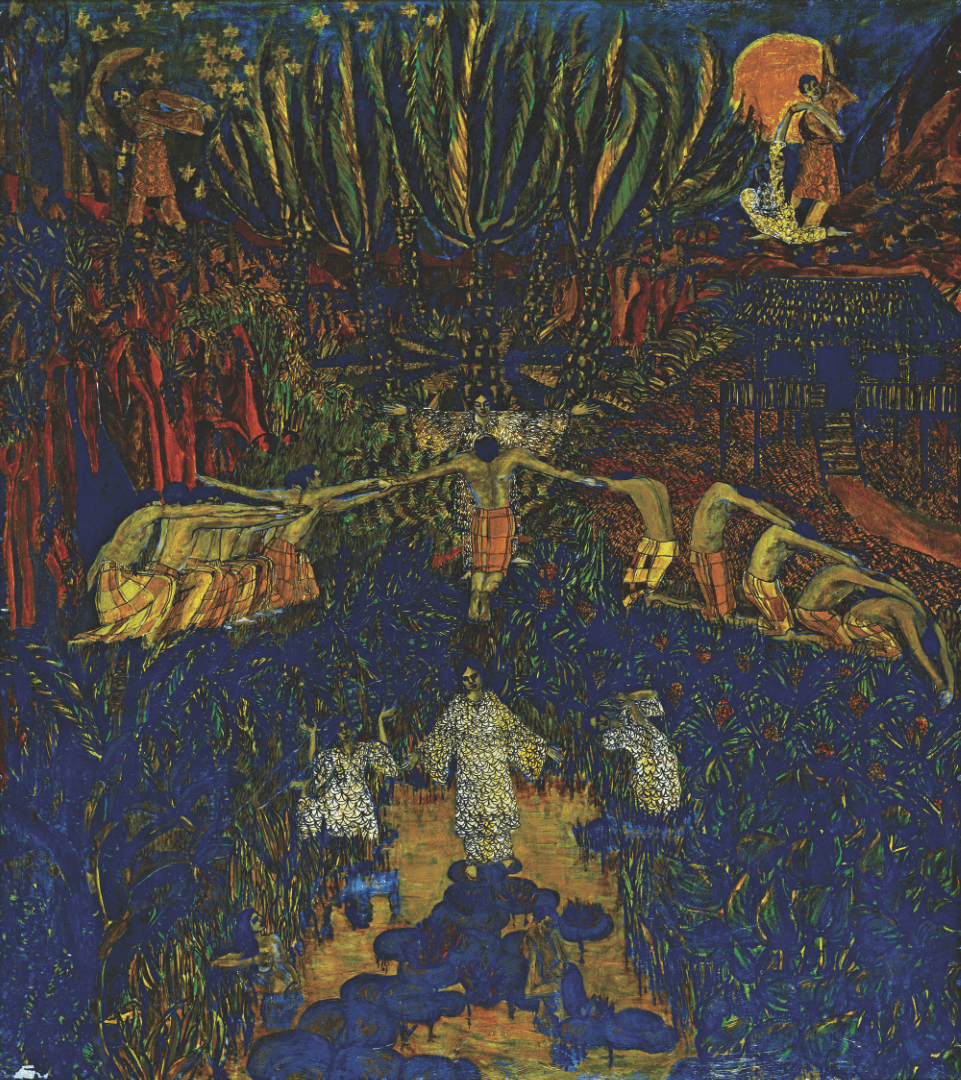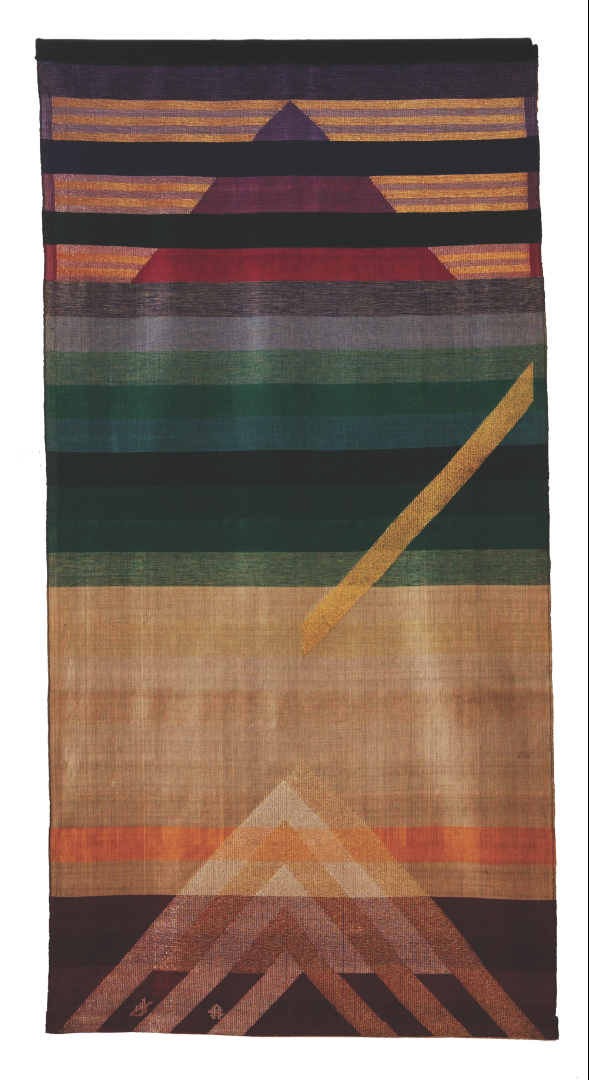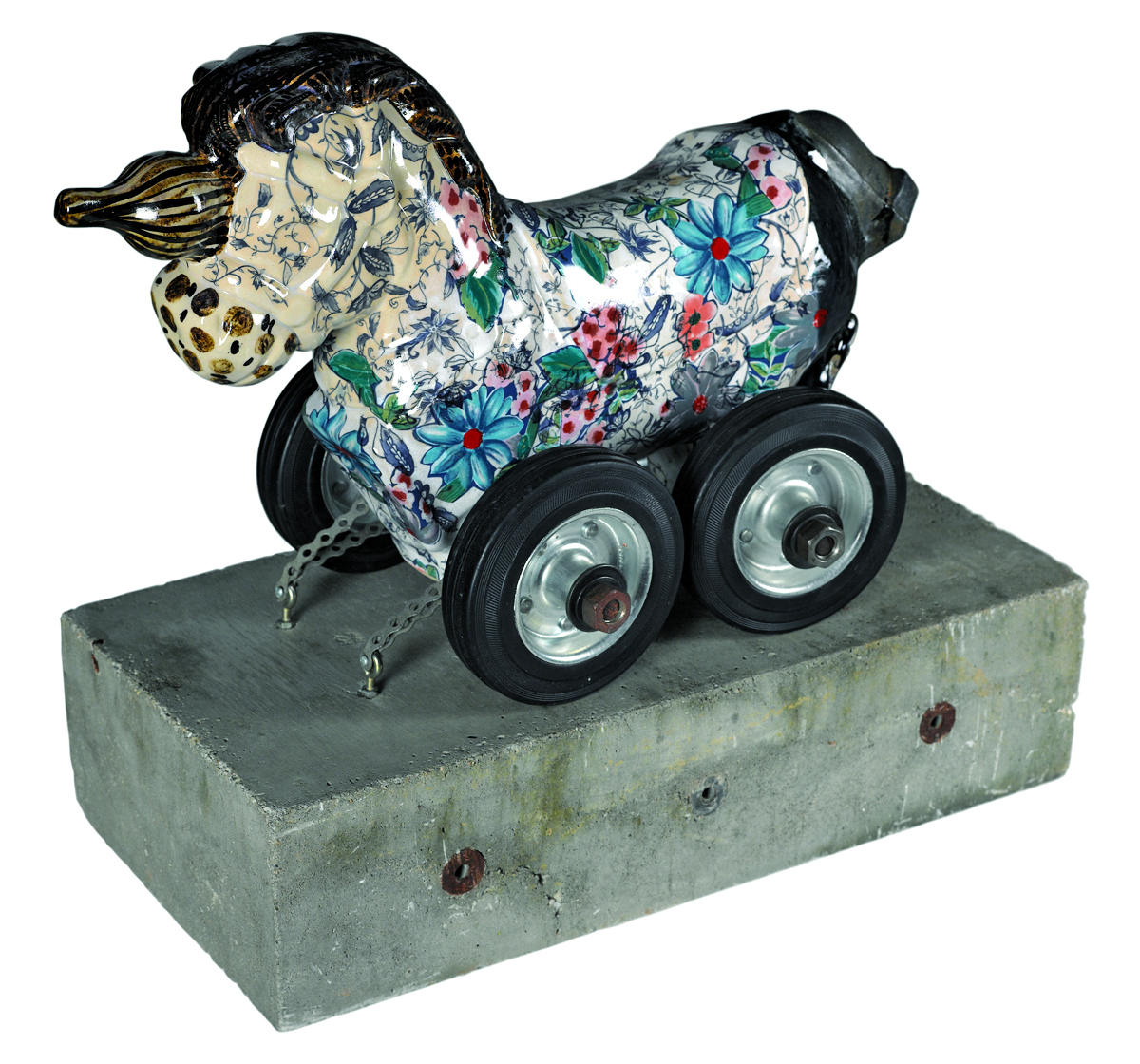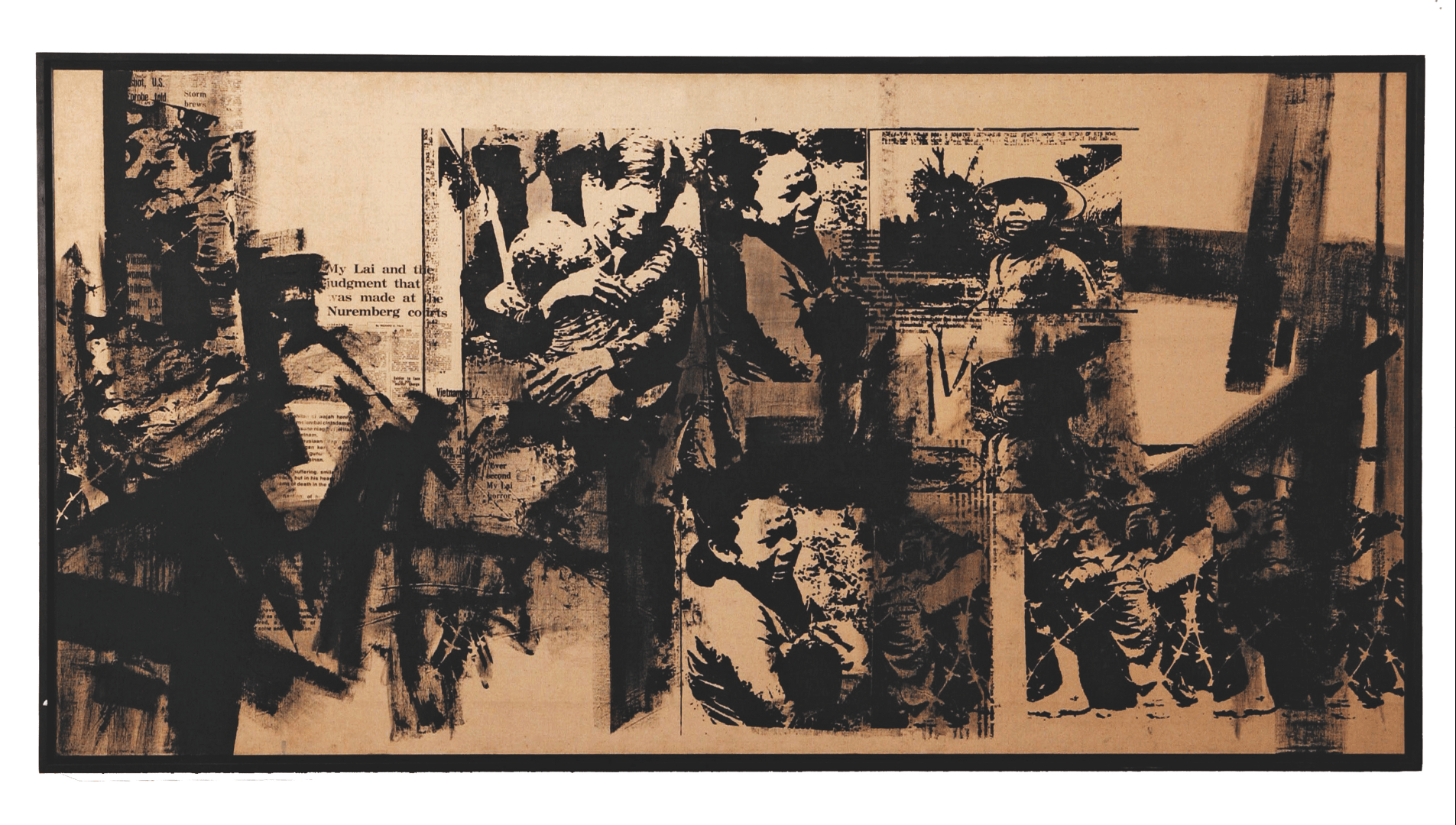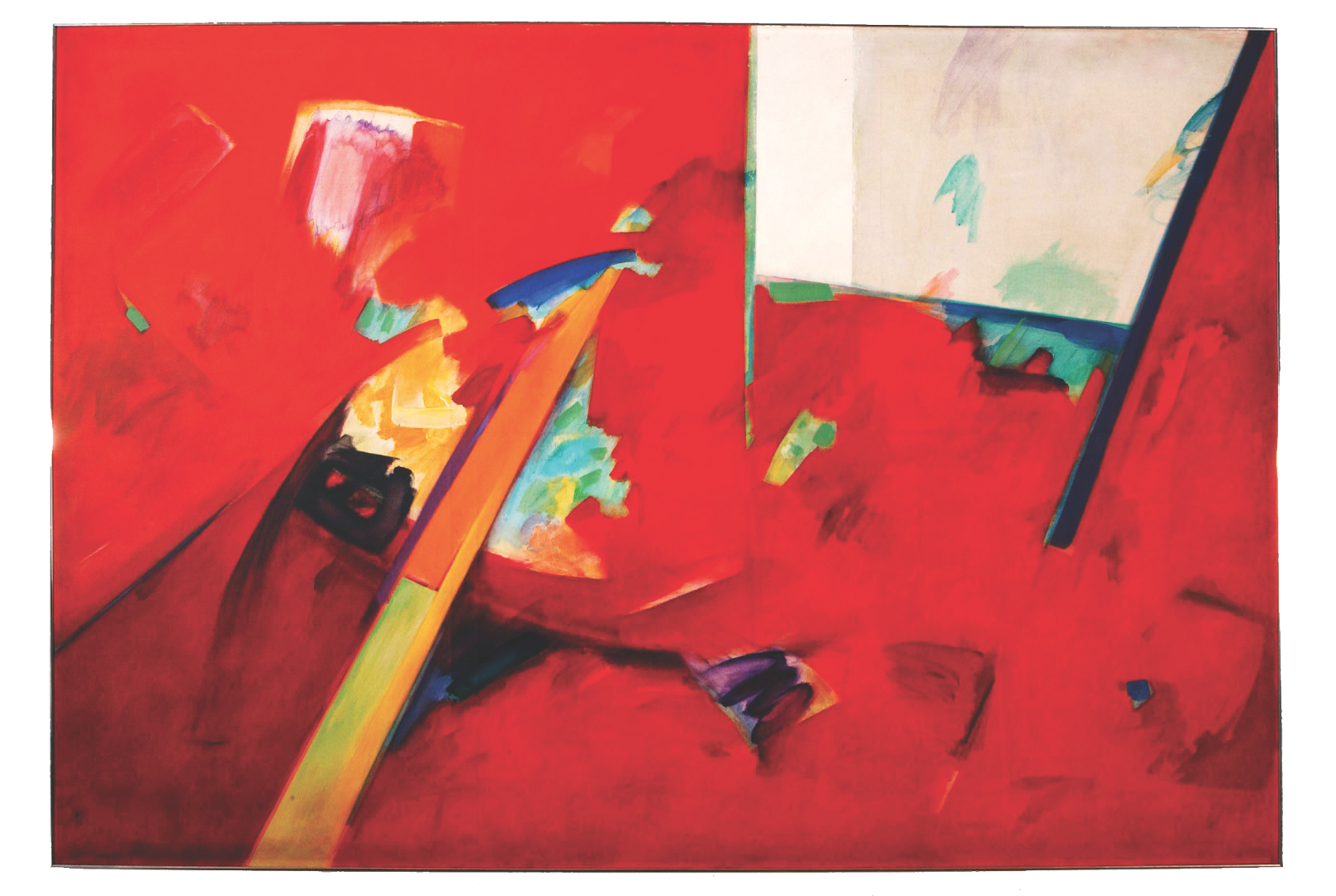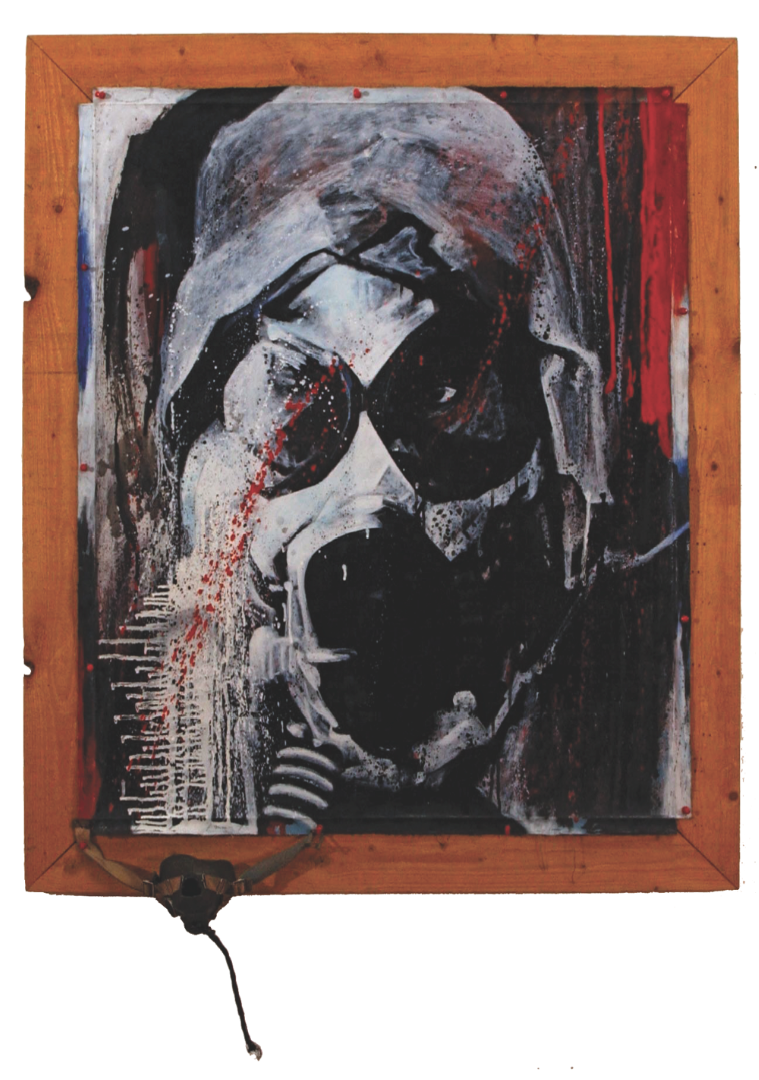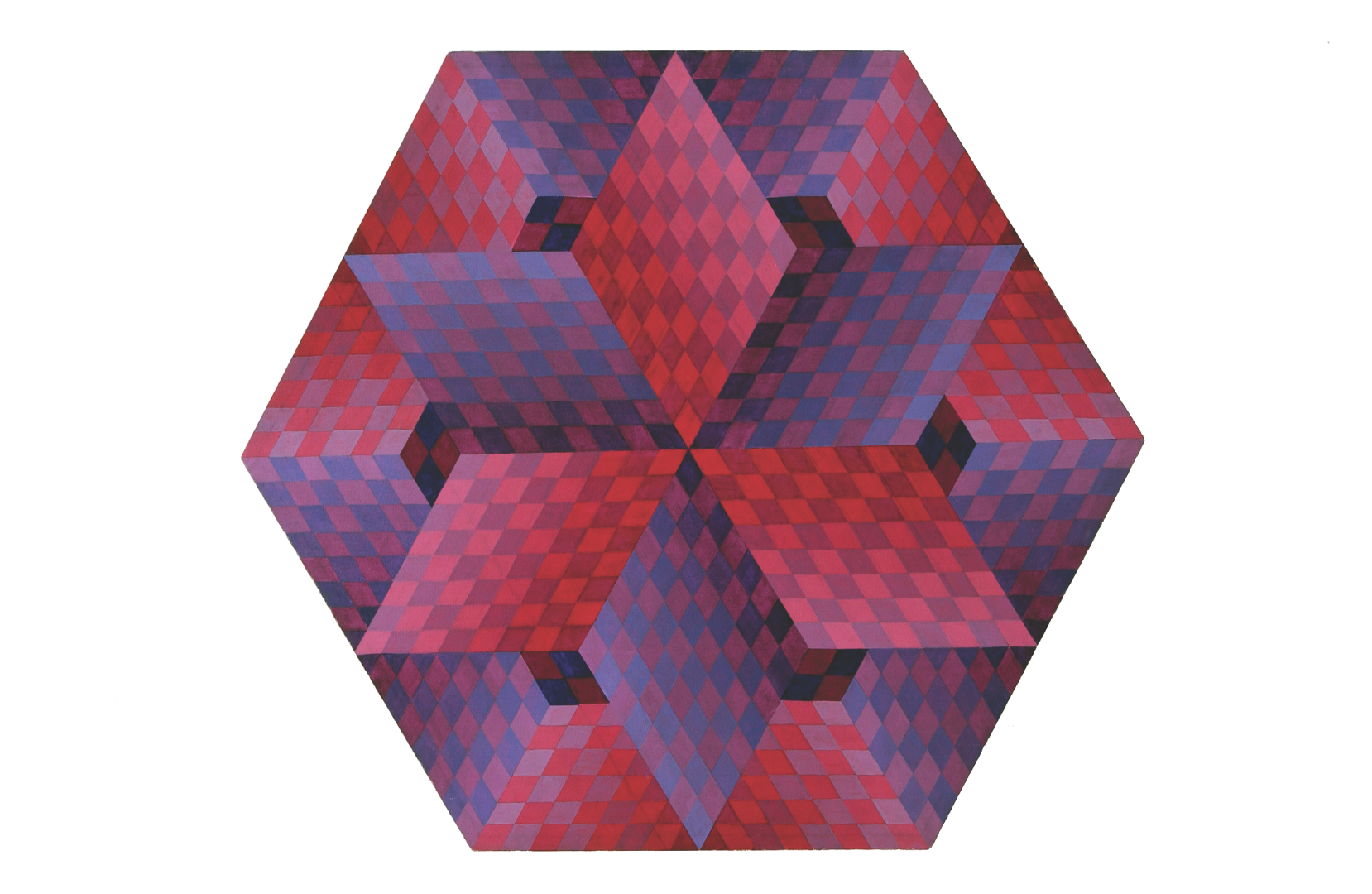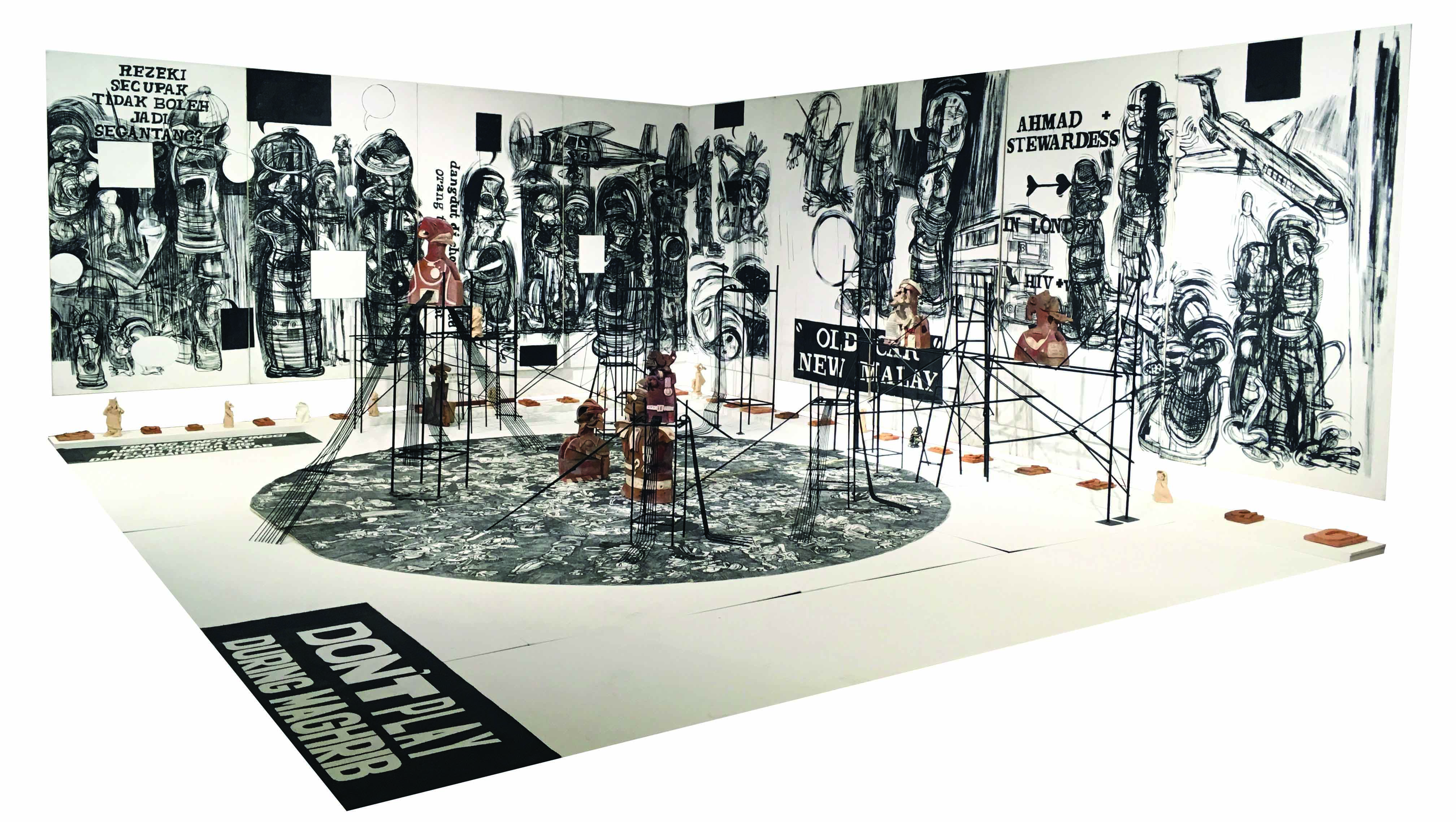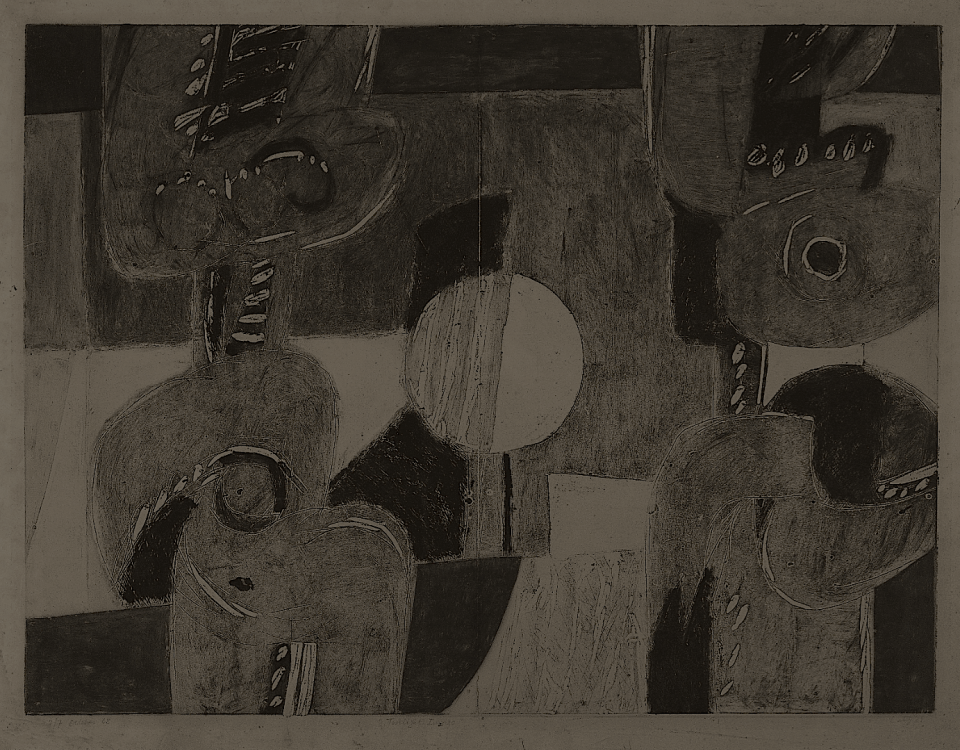The following images from the National Art Gallery collection conjures anecdotal points trailing its sixty years of existence. Assembled from A to Z to enable you to discover and imagine a vibrant art and artists’ directory in a delightful visual harmony of our shared memories.
PRINTS
‘To Another Galaxy’ Linocut
by I. NECRASOV. c.1970.
86.2 x 64cm.
Gift of the USSR Embassy.
In the past Malaysian printmakers like Loh Foo Sang, Ilse Noor, Lee Joo For, Long Thien Shih, Latiff Mohidin, and Juhari Said have represented our country in numerous exhibitions and their works reside in the collections of museums and galleries across the globe since the late 60’s.
This good rapport is reciprocated in the form of further cultural exchange and gifts. One notable gift in the 1970’s and the second in the 80’s from a foreign country is the Russian print collection.
PRINTS
‘Women and Peace’
Linocut
by L. ILIJINA. c.1970.
86.2 x 64cm.
Gift of the USSR Embassy.
L. Iljina (born in 1915, Frunze, USSR) and
I. Necrasov (born in 1929, Leningrad), two works here capture the spirit of the industry and progress of the times in the USSR. One can see in the Russian art as mentioned by art historian Esti Sheinberg, an “interrelationship between artistic technique and ideological content is the main aesthetic criterion”. Twelve percent of the national collection consist of prints. Around eight percent are Russian prints.
QUO VADIS (WHERE ARE YOU GOING?)
Gelatin Silver Print Photo
by TEOH SIEW SOONG. c.1960.
36 x 26.5cm
Gift by Dato Loke Wan Tho.
In this dramatic portrait of an unknown sitter, the elderly Indian man is pictured in the desire to convey the character of the sitter . The emotions are further enhanced through the colour gradient and graininess of the photograph. This is one of the over 500 photographs donated by the ardent collector of fifties pictorialist images Dato Loke Wan Tho to the National Art Gallery in 1963. The Pictorialists were deemed to have crossed the divide between photography and fine art.
RAUSCHENBERG
‘Malaysian King’.
by ROBERT RAUSCHENBERG 1990.
Mix media. 244 x 488cm. Gift of ROCI.
The Rauschenberg Overseas Cultural Interchange-Malaysia or ROCI Malaysia had began in 1980 as a mode to dialogue and connect with the people of various nations through art. In 1987, Donald Staff the ROCI Artistic Director agreed to have Kuala Lumpur host the final leg in the project in Southeast Asia and this resulted in the memorable exhibition of the great artist launched by no other than the Malaysian king, His Majesty Sultan Azlan Shah. The artwork entitled Malaysian King promptly created after his cross-cultural excursions was presented to the people of Malaysia on the occasion.
Muhammad Hj Salleh wrote in the ROCI Malaysia exhibition catalog that Robert Rauschenberg (1925-2008) is enslaved by the power of art as a unification factor in a fragile world, in search of peace.
SPIRIT OF THE EARTH SKY AND WATER
Oil on board
by PATRICK NG KAH ONN 1959.
137 x 122cm.
This ode to nature is Patrick Ng Kah Onn, uniquely detailed narrative composed of three distinctive zones, namely the sky, the upper world, the earth, the middle world, and the water or lower world located at the foreground of the painting. At the top of the canvas is depicted two young men dressed in Malay costume one set against the stars and the other against the full moon, pouring the seeds of life onto the earth. Tree plants surge upwards, in the centre a woman with outstretched arms is blessing the homage of the young man and other youths in kneeling positions similar to the Balinese kechak dance. In the lake, there is an embracing couple not unlike the yaksha of Indian art.
Spirit of the earth, sky, and water embodies a remarkable symbiosis of Nature and Spirituality and today is an iconic piece in Southeast Asian art history.
TUMPAL
Songket textile
by HABIBAH ZIKRI & Syed A Jamal 1975.
205 x 103cm.
The central image in the woven textile work known as songket is the traditional tumpal motif which in the Southeast Asian tradition art context, symbolises the cosmic world mountain Mahameru. This triangular motif is traceable to the region’s Hindu-Malay lineage. The mountain or gunungan motif denotes the middle world where man and animals subsisted.
Tumpal, designed by Syed Ahmad Jamal (1929-2011) is derived from the fusion of craft (songket weave) by National Craft Laureate, Habibah Zikri (1948), and painting. It is a typical motif incorporated by many Malay-Islamic revivalist artists in the post National Culture Congress context of the seventies.
UMI
‘Secret toy series’
by Umibaizurah
Mahir Ismail 2007. White stoneware crackle glaze decal and wheels
59 x 100 x 16cm.
Umi or Umibaizurah Mahir Ismail (born in 1975) is a leading contemporary ceramic artist famous for her playful ceramic sculptures and assemblages. Many of her works are imagined hybrids of species, objects, and machinery, linking the multitude of issues concerning the modern world we live in.
There is a great effort in creating a ceramic piece that meets the eye. As pioneer modern ceramicist Ham Rabeah reminds us “Although it is complicated and more meticulous than painting, its raw materials start from zero owing to the creator’s skill, creativity and enthusiasm. These fine dusts decidedly manage to be formed”.
VIETNAM
Mixed media on canvas
by NIRMALA DUTT SHANMUGHALINGAM 1981
102 x 201cm.
Nirmala Dutt Shanmughalingam (1941-2016) produced Vietnam using images from the mass media as a statement on the brutality of the Vietnam war. She reveals an important paradox in Vietnam: How is it that the US condemned Nazi war crimes during the Nuremberg trials yet drop napalm bombs to annihilate Vietnamese villages?
The artist who dedicated herself to produce various social commentary works from deforestation, the poor-living conditions and child-abuse occuring in Malaysia to the bombing of Libya, continued to commit her last body of works as a memorium to the 2004 Tsunami in Southeast Asia.
WINDOW IN THE SKY
Oil on canvas
by SYED AHMAD JAMAL 1969.
199.5 x 291cm.
This bold abstract work
by Syed Ahmad Jamal
(1929-2011) is made up of bright red, oranges, yellows and whites. The window is seen as a tilted white rectangular shape located at the top and right hand corner. The bottom left is a shaft of yellow energy that enters into the picture and streaks towards the window.
Highly dramatic, this work was prompted by the student uprising in Paris in 1968, an event that triggered global political unrest that forced changes in education and the participation of youth in decision making bodies in the late 60’s.
X PORTRAIT
Mixed media
by BAYU UTOMO RADJIKIN 1994.
119 x 99.5cm.
Bayu Utomo Radjikin (born in 1969) known for his expressive and evocative local and international social commentary works as well as several portraitures of identity series has described X portrait as that of an unknown person. Bayu explains, “The anonymity can make us think that the person may be a friend or an enemy. Its recognisably human but one is uncertain of the humanistic elements or humane sensibilities of the individual“.
YAMAN
‘Illusi Enam Penjuru’
by Muhammad Yaman Ahmad Mus 1998.
Acrylic on canvas. 106.3 x 121.5cm.
Yaman or Dato Muhammad Yaman Ahmad Mus (1938-2012), Malaysia’s selfless modern art pioneer truly mastered the visual language of Op art and produced a series of unique and vibrant Illusion paintings never attempted before
by other Malaysian artists.
The artist has contributed to the nation, as a designer, illustrator, educator, art director, and art mentor. He designed the Sabah state flag and crest and also established the Sabah Art Gallery in 1984.
ZULKIFLI YUSOF
‘Dialogue 2: Don’t Play During Maghrib’
by Zulkifli Yusof 1996.
Mixed media. 221 x 112cm.
This particular work by artist Zulkifli Yusof (born in 1962) deals with the theme of Maghrib or that time at dusk where Muslims perform their evening prayers. Muslim children are told not to play outside the house at dusk as that is believed to be the period when evil spirits roam.
The highly charged installation complete with drawings and wall graffiti quotes both in English and Bahasa Malaysia language alongside grotesque ceramic figures had represented Malaysia in the Venice Biennale in 1997.




